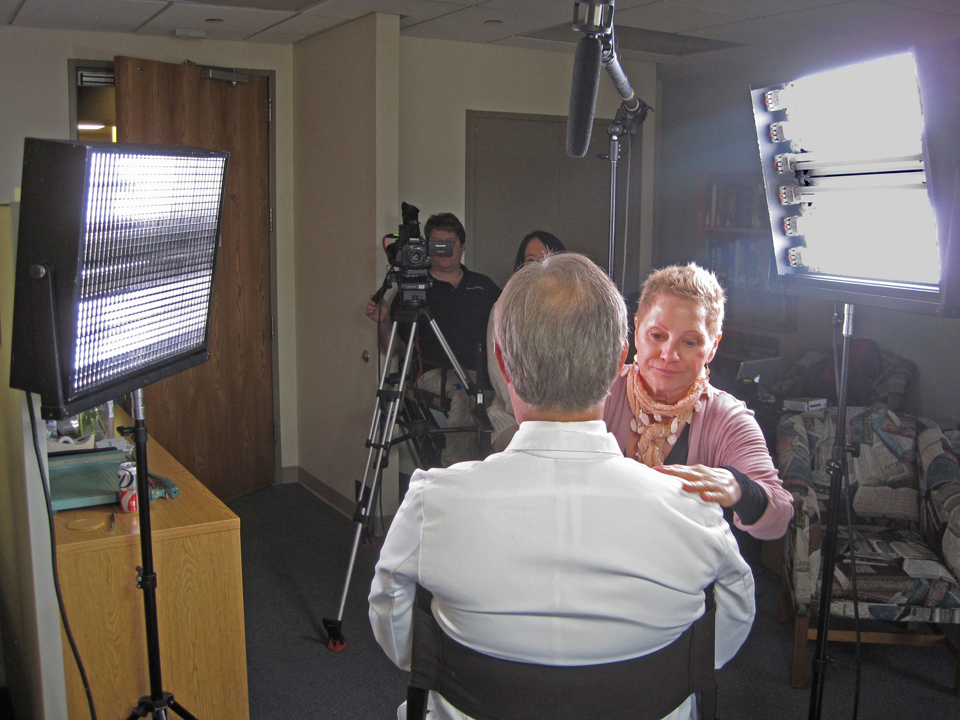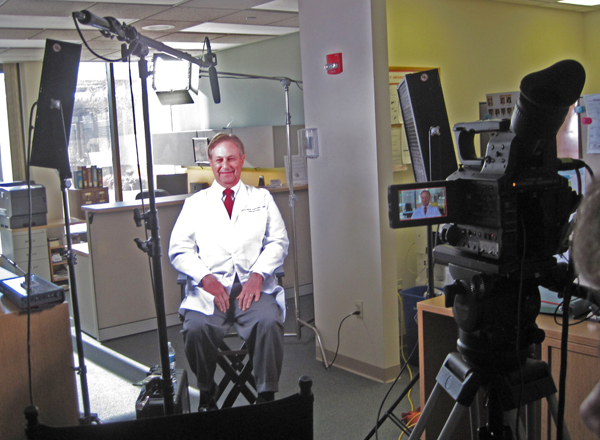In the world of video production, talking head videos are a staple. They are a popular format for a wide range of purposes, from corporate interviews to educational content and marketing messages. While they may seem straightforward, producing high-quality talking head videos comes with its fair share of challenges. As an experienced video producer at St. Louis Video Services, a full-service video production company, I’ve encountered and overcome these challenges many times. In this comprehensive guide, we’ll delve into the common challenges faced when shooting talking head videos and provide expert insights and solutions to ensure your productions are a success.
Introduction
St. Louis Video Services: Your Trusted Partner for Video Production
Before we dive into the intricacies of shooting talking head videos, allow me to introduce St. Louis Video Services. We are a full-service video production company with a team of creative experts, state-of-the-art equipment, and a wealth of experience in crafting impactful creative productions. Whether you require studio or location shooting, post-production editing, or still photography services, we’ve got you covered. Our versatility allows us to tailor videos to meet diverse creative needs, and we excel at repurposing your content for maximum traction. With expertise in all file types and media styles, St. Louis Video Services is your go-to partner for all things video and photography.
As a full-service video creation company, St. Louis Video Services has had the privilege of working with numerous businesses and organizations in the St. Louis area to bring their visions to life. Our team of experienced videographers, directors, and producers is dedicated to delivering exceptional results for every project.
Now, let’s delve into the world of talking head videos and explore the challenges you might encounter.
The Significance of Talking Head Videos
Talking head videos involve a person speaking directly to the camera, typically explaining or discussing a particular topic. They are widely used for various purposes, including:





- Corporate Communications: CEOs and executives use talking head videos to convey important messages to employees, stakeholders, and the public.
- Marketing: Brands often employ talking head videos to establish a personal connection with their audience, whether through product demonstrations, testimonials, or expert insights.
- Educational Content: Instructors and trainers use this format to engage students and learners by providing information in a personable manner.
- Interviews: Interviews and panel discussions often feature talking head shots to focus on the speaker’s commentary.
- Documentaries: Documentaries often include interviews with experts and witnesses to tell a compelling story.
While talking head videos may seem simple, they require careful planning and execution to be effective. Let’s explore the challenges associated with producing them and how to address them.
Challenges in Shooting Talking Head Videos
1. Scripting and Content Delivery
Challenge:
One of the primary challenges in producing talking head videos is creating compelling and coherent scripts. The speaker must engage the audience, convey information effectively, and maintain a natural flow.
Solution:
- Scriptwriting: Invest time in crafting a well-structured script that addresses the intended message concisely. Focus on clarity and brevity.
- Teleprompters: Consider using a teleprompter to help the speaker maintain eye contact with the camera while delivering lines smoothly.
2. Lighting and Set Design
Challenge:
Achieving optimal lighting and set design is crucial for a professional-looking talking head video. Poor lighting can lead to unflattering shadows and distract from the message.
Solution:
- Lighting Setup: Use soft, diffused lighting to eliminate harsh shadows on the speaker’s face. Properly position key lights, fill lights, and backlights to create depth and dimension.
- Background: Choose a suitable background that complements the subject matter and ensures the speaker stands out without distractions.
3. Camera Equipment and Framing
Challenge:
Selecting the right camera equipment and framing the shot correctly are vital for a polished talking head video. Subpar equipment can result in grainy or blurry footage, while improper framing can detract from the speaker’s presence.
Solution:
- Camera Selection: Use high-quality cameras with suitable lenses for sharp and clear footage.
- Framing: Follow the rule of thirds to frame the speaker effectively. Maintain eye-level camera positioning for a natural perspective.
4. Audio Quality
Challenge:
Poor audio quality can ruin an otherwise excellent talking head video. Background noise, echo, or low-quality microphones can distract viewers from the message.
Solution:
- Microphone Choice: Invest in high-quality microphones, such as lavalier or shotgun microphones, to capture clear and crisp audio.
- Soundproofing: Minimize background noise by choosing a quiet location or using soundproofing materials.
5. Performance and Body Language
Challenge:
Engaging the audience through performance and body language is essential for the success of a talking head video. Monotone delivery or distracting gestures can undermine the message.
Solution:
- Practice: Encourage the speaker to practice their delivery and body language before shooting. Offer constructive feedback to improve their performance.
- Coaching: Consider enlisting the help of a professional coach to enhance the speaker’s delivery and confidence on camera.
6. Post-Production Editing
Challenge:
The editing process is critical in refining the talking head video. It involves tasks such as removing mistakes, enhancing visuals, and adding graphics or captions.
Solution:
- Video Editing: Use professional video editing software to refine the footage, add transitions, and improve overall quality.
- Color Correction: Adjust colors to ensure consistency and a pleasing visual aesthetic.
- Graphics and Captions: Incorporate graphics, lower thirds, and captions as needed to enhance viewer engagement.
7. Distribution and Repurposing
Challenge:
Once your talking head video is ready, the challenge shifts to effectively distributing it and repurposing the content for maximum reach and impact.
Solution:
- Content Strategy: Develop a content distribution strategy that includes sharing the video on relevant platforms, such as YouTube, social media, and your website.
- Repurposing: Extract shorter clips or quotes from the video to share as teasers or promotional content on social media. Consider transcribing the video for accessibility and SEO benefits.
Conclusion
Producing compelling talking head videos may present various challenges, but with the right approach and expertise, you can overcome them and create impactful content. Whether you’re a corporation seeking to communicate with your audience, a marketer aiming to engage customers, an educator imparting knowledge, or a documentarian sharing stories, St. Louis Video Services is here to help.
As a full-service video creation company, St. Louis Video Services has a proven track record of working with businesses and organizations in the St. Louis area to bring their creative visions to life. Our experienced videographers, directors, and producers are dedicated to crafting videos and photography that meet your specific needs.
Don’t let the challenges of talking head videos hold you back. Contact St. Louis Video Services today to discuss your project and discover how we can transform your ideas into captivating visual content that resonates with your audience.
Remember, your message is important, and we have the expertise to ensure it’s delivered effectively.
